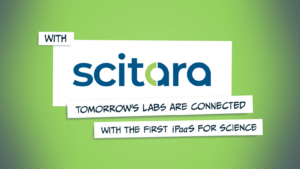In today’s fast-paced and data-driven world, digital transformation has become imperative for laboratories seeking to enhance efficiency, accuracy, and overall productivity. By leveraging innovative technologies and digital solutions, laboratories can streamline their processes, optimize resource utilization, and unlock new opportunities for scientific advancements. However, embarking on a laboratory digital transformation journey requires careful planning and strategic execution. In this blog, we will explore five essential tips to help you plan your laboratory’s digital transformation successfully.
- Identify your objectives and prioritize them:
Before diving into the digital transformation process, it is crucial to identify your laboratory’s objectives and clearly define the outcomes you hope to achieve. Are you looking to improve data management, automate repetitive tasks, enhance collaboration, or increase overall efficiency? By prioritizing your goals, you can align your digital transformation efforts with your laboratory’s specific needs and set measurable targets for success. This initial step will provide a roadmap for the subsequent stages of your transformation journey.
- Assess your existing infrastructure and processes:
To effectively plan your laboratory’s digital transformation, you must conduct a thorough assessment of your current infrastructure, systems, and processes. Evaluate the strengths and weaknesses of your laboratory’s technology stack, data management systems, and laboratory workflows. This assessment will help you identify areas where digital solutions can bring the most significant impact and guide you in selecting the appropriate technologies to support your transformation initiatives. Additionally, consider the scalability and integration capabilities of potential solutions to ensure long-term success.
- Engage stakeholders and build a multidisciplinary team:
Digital transformation initiatives are more likely to succeed when stakeholders are actively involved and aligned with the project’s goals. Engage laboratory staff, management, IT personnel, and other key stakeholders from the outset. Their insights, experiences, and perspectives will be invaluable in understanding the unique challenges and requirements of your laboratory. Additionally, forming a multidisciplinary team comprising experts from various domains (e.g., laboratory science, IT, project management) will facilitate a holistic approach and foster collaboration throughout the transformation process.
- Create a realistic implementation plan:
A well-structured implementation plan is crucial for the successful execution of your laboratory’s digital transformation. Break down the transformation process into manageable phases and set realistic timelines for each stage. Consider the necessary resources, budgets, and training requirements for each phase. Prioritize critical components, such as data security and regulatory compliance, and allocate sufficient time and resources for testing and quality assurance. Regularly review and adjust the plan based on feedback and evolving needs to ensure a smooth transition.
- Foster a culture of continuous improvement and learning:
Digital transformation is an ongoing journey rather than a one-time event. Encourage a culture of continuous improvement and learning within your laboratory. Provide training and resources to equip your staff with the necessary digital skills and empower them to embrace the changes brought about by digital transformation. Foster an environment where experimentation and innovation are encouraged, allowing for the exploration of emerging technologies and processes that can further enhance your laboratory’s efficiency and capabilities.
Conclusion:
Embarking on a laboratory digital transformation journey can revolutionize the way your laboratory operates, leading to improved efficiency, accuracy, and overall productivity. By following these five essential tips, you can lay a solid foundation for planning and executing your laboratory’s digital transformation successfully. Remember, it is crucial to align your objectives, assess your existing infrastructure, engage stakeholders, create a realistic implementation plan, and foster a culture of continuous improvement. With careful planning and strategic execution, your laboratory can leverage digital technologies to stay ahead in the ever-evolving scientific landscape.
